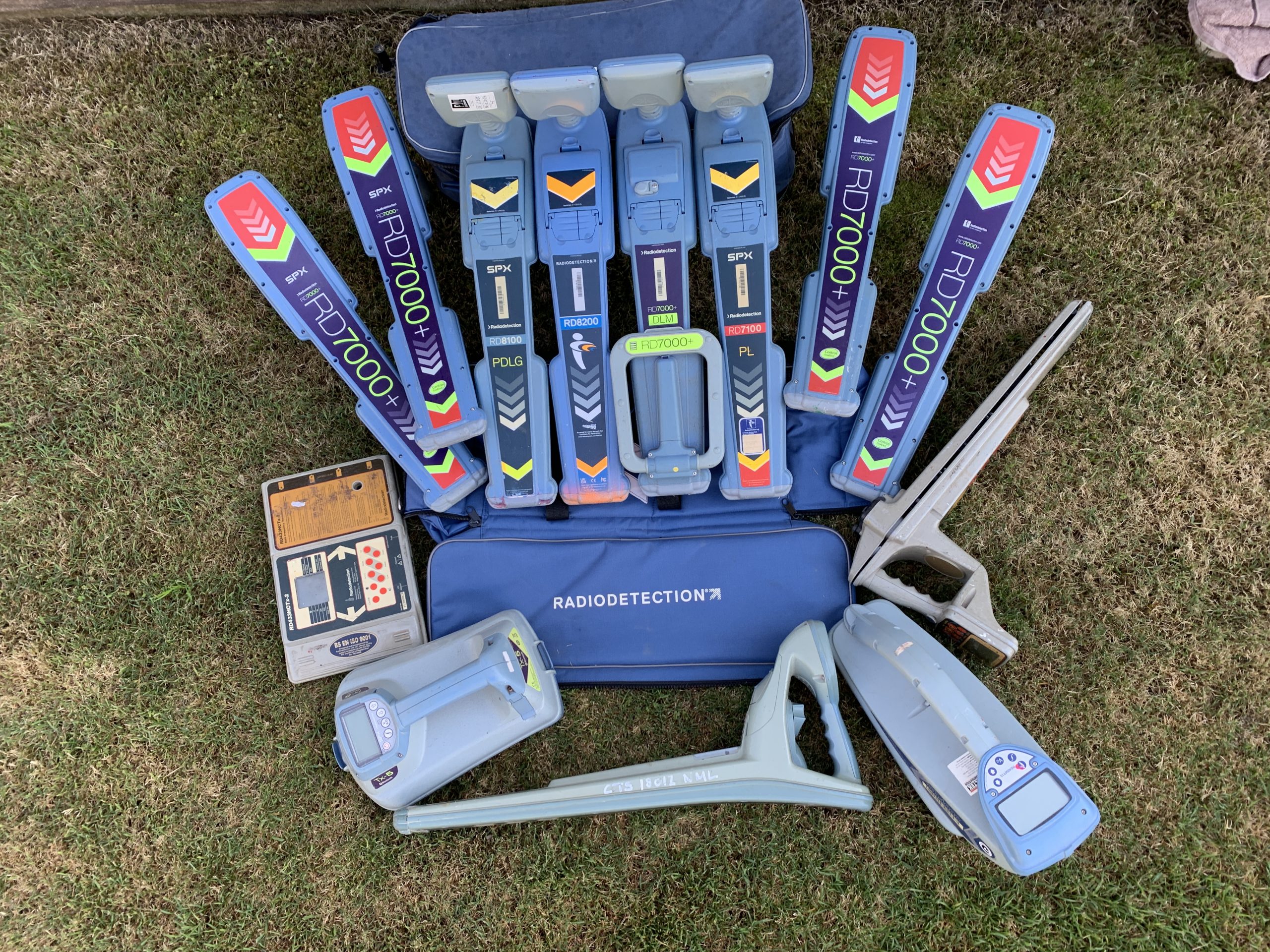The History of Radio Detection Locators

Regarded by many as the leading EM locator brand on the market, Radio Detection has a history dating back several decades, and has played a significant role in advancing underground utility detection and location technology. Radiodetection has been at the forefront of its chosen technology fields for over 50 years. Throughout that time, they have developed new and innovative solutions to meet their customer’s challenges, leading to the creation of patents around the world.
Here’s an overview of the history of Radiodetection:
Early Years and Foundation:
Radiodetection was founded in 1970 in Bristol United Kingdom by two engineers, Brian Watson and Peter Brooker. The company’s initial focus was the offering of a tracing service for underground utility lines. The company pioneered the development of the twin coil antenna and built locators for their own use. They were pioneers in developing innovative and reliable underground cable and pipe locators using radio frequency (RF) technology.
Early Innovations:
In its early years, Radiodetection made notable advancements in the development of electromagnetic and ground-penetrating radar technology for utility detection. They introduced the first cable and pipe locator with both a transmitter and receiver in a single unit, which greatly improved the efficiency and accuracy of locating buried utilities.
The RD400 was launched in the 80’s gaining international recognition, with judges at the Hanover Fair in West Germany, who awarded it “Outstanding Industrial Design”. The RD400 combined performance in an easy to use, rugged and ergonomic package.
Global Expansion:
Radiodetection quickly gained recognition for the reliability and effectiveness of its utility locators and began expanding its presence globally. The company’s products were adopted by utility companies, construction firms, surveyors, and other industries requiring underground utility detection. Every product in the Radiodetection range is designed and manufactured to the highest standards. Radiodetection’s manufacturing operations are ISO 9001 accredited, and their products benefit from a range of approvals in specific industries.
Continuous Research and Development:
Over the years, Radiodetection continued to invest in research and development, leading to the introduction of more advanced and sophisticated utility locators and GPR equipment. These advancements included improved signal processing, increased frequency ranges, and enhanced data visualization.
Integration of Ground-Penetrating Radar:
Radiodetection expanded its product range to include ground-penetrating radar (GPR) equipment. GPR allows for non-invasive subsurface imaging and provides valuable data for locating utilities, voids, and other underground structures.
Radiodetection launched the RD1000™ portable ground penetrating radar system. Using Radar technology, the RD1000 displays an image map of underground features. With the RD1000, the technician can see a pipe or cable in its topographical context making it ideal for locating and excavating utilities.
The GPR range was then updated to the RD1100 and RD1500 products that offered a range of new features including GPS and depth slice visualisation of underground utilities.
Part of SPX Corporation:
In 1985, following their acquisition of UDI, Radiodetection became part of the SPX Corporation, a global supplier of highly engineered products and technologies. As a subsidiary of SPX, Radiodetection continued to grow its market presence and technological capabilities.
Diverse Product Portfolio:
Radiodetection offers a diverse range of products, including utility locators for locating buried cables and pipes, GPR equipment for subsurface imaging, and other specialized tools for utility detection and surveying.
Radiodetection’s growth is driven by a series of new product introductions, including:
- RD4000 Series was launched which featured significant improvements to its range of high-end pipe and cable locators. The RD4000TL delivered precision location of telecommunications infrastructure with the highest level of performance even in crowded and electrically noisy areas. The RD4000 was the world’s first web-enabled cable and pipe location system. Register online, access support, including system reconfiguration, download extra features, frequencies and upgrades, quickly and easily via an Internet connection.
- PearPoint flexiprobe launched, a new versatile rodding system for inspection of pipes, sewers, ducts and conduits.
- Radiodetection launched the RD7000™ and RD8000™ cable and pipe locator. The RD7000™ and RD8000™ are powerful successors to the industry standard RD4000 family of cable and pipe locators. The RD 7000™ and RD8000™ represent Radiodetection’s continuing development and improvement of cable and pipe locator systems providing the broadest range and choice for any user.
- Their flagship range of high-precision cable locators was enhanced with the introduction of the RD7100 and RD8100 products.
- Despite the world economy’s slowing because of Covid-19 Radiodetection powered on with the introduction of the RD8200 & RD7200.
Acquisitions
- Sensors & Software GPR
- Schonstedt Instrument Company
- Pearpoint Ltd
- Telespec
- Mactek
Industry Recognition:
Radiodetection has received numerous awards and accolades for its innovation and contribution to the utility detection industry. Its products have been widely adopted worldwide and have become a standard choice for many professionals in the field.
For Radio Detection Equipment in Australia:
https://www.radiodetection.com/en-au
For all you Training needs: